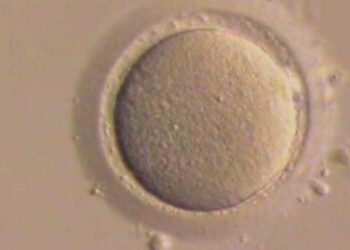Comparable outcomes for embryo transfers by fellows versus attending physicians
1. There was no difference in live birth rates after embryo transfers performed by reproductive endocrinology fellows versus attending physicians using the afterload method.
2. Outcomes remained statistically similar after adjusting for confounders, including maternal age and number of high quality embryos transferred.
Evidence Rating Level: 2 (Good)
Study Rundown: Existing literature suggests that the success of the embryo transfer step in IVF is influenced by the skill of the performing provider, which highlights the importance of high quality training. However, due to patient preferences among other factors, many fellowship programs restrict embryo transfers to attending physicians, limiting the training opportunities fellows receive. Few studies have specifically looked at the differences in live birth rates between fellow and attending performed IVF, and those that have were not of a particularly high quality. In this retrospective study, researchers at one large academic institution found no difference in live birth rates after ultrasound-guided embryo transfers performed by reproductive endocrinology fellows versus attending physicians, even after adjusting for confounders.
A strength of this study is that researchers controlled for many potential confounders, including maternal age and number of embryos transferred. Moreover, they used a clinically relevant outcome, live birth rates, rather than just successful implantation. The study was not large enough, however, to control for difficulty of transfer. It is possible that attending physicians performed more difficult transfers than fellows, limiting results by selection bias. Additionally, findings may not be generalizable in that they used one specific training technique (the afterload method) and only studied providers at one, highly competitive academic institution, where a fellow’s skill set may not reflect the national average. Future studies might try to repeat results in a multi-site, prospective or randomized controlled study, or compare the afterload technique to other training methods.
Click to read the study in AJOG
Relevant Reading: Role of embryo transfer in fellowship training
In-Depth [retrospective cohort]: All women who underwent fresh, non-donor, ultrasound-guided embryo transfer at a large academic hospital from October 2005-April 2011 were included in the study. All providers used the “afterload method”, in which a placement catheter is used to ensure optimal catheter placement and minimize time from loading to transfer. Using an adjusted logistic regression, live birth rates were compared between transfers done by reproductive endocrinology fellows (n=104) versus attending physicians (n=760).
The live birth rate following embryo transfer performed by an attending physician was 31%, compared to 34% when performed by a fellow, a statistically insignificant difference (p=0.65). When adjusted for potential confounders, including maternal age and number of high quality embryos transferred, the rates remained similar.
More from this author: SSRI use during pregnancy not associated with fetal, neonatal or infant mortality, IUD contraception equally effective in teenagers as in older women, More US women using emergency contraception, Updated USPSTF guidelines favor treatment of mild gestational diabetes
Image: PD
©2012-2014 2minutemedicine.com. All rights reserved. No works may be reproduced without expressed written consent from 2minutemedicine.com. Disclaimer: We present factual information directly from peer reviewed medical journals. No post should be construed as medical advice and is not intended as such by the authors, editors, staff or by 2minutemedicine.com. PLEASE SEE A HEALTHCARE PROVIDER IN YOUR AREA IF YOU SEEK MEDICAL ADVICE OF ANY SORT.


![The ABCD2 score: Risk of stroke after Transient Ischemic Attack (TIA) [Classics Series]](https://www.2minutemedicine.com/wp-content/uploads/2013/05/web-cover-classics-with-logo-medicine-BW-small-jpg-350x250.jpg)




